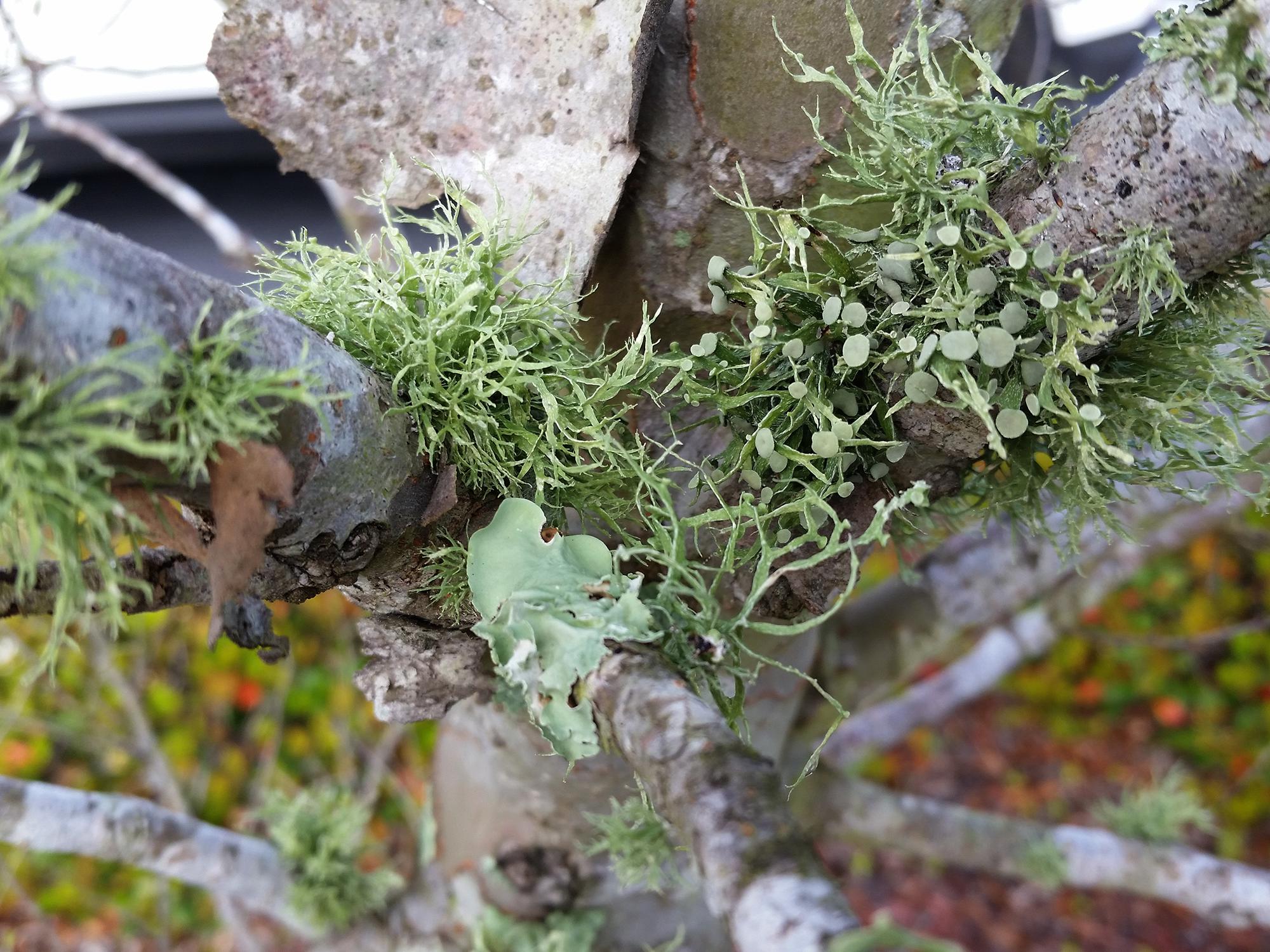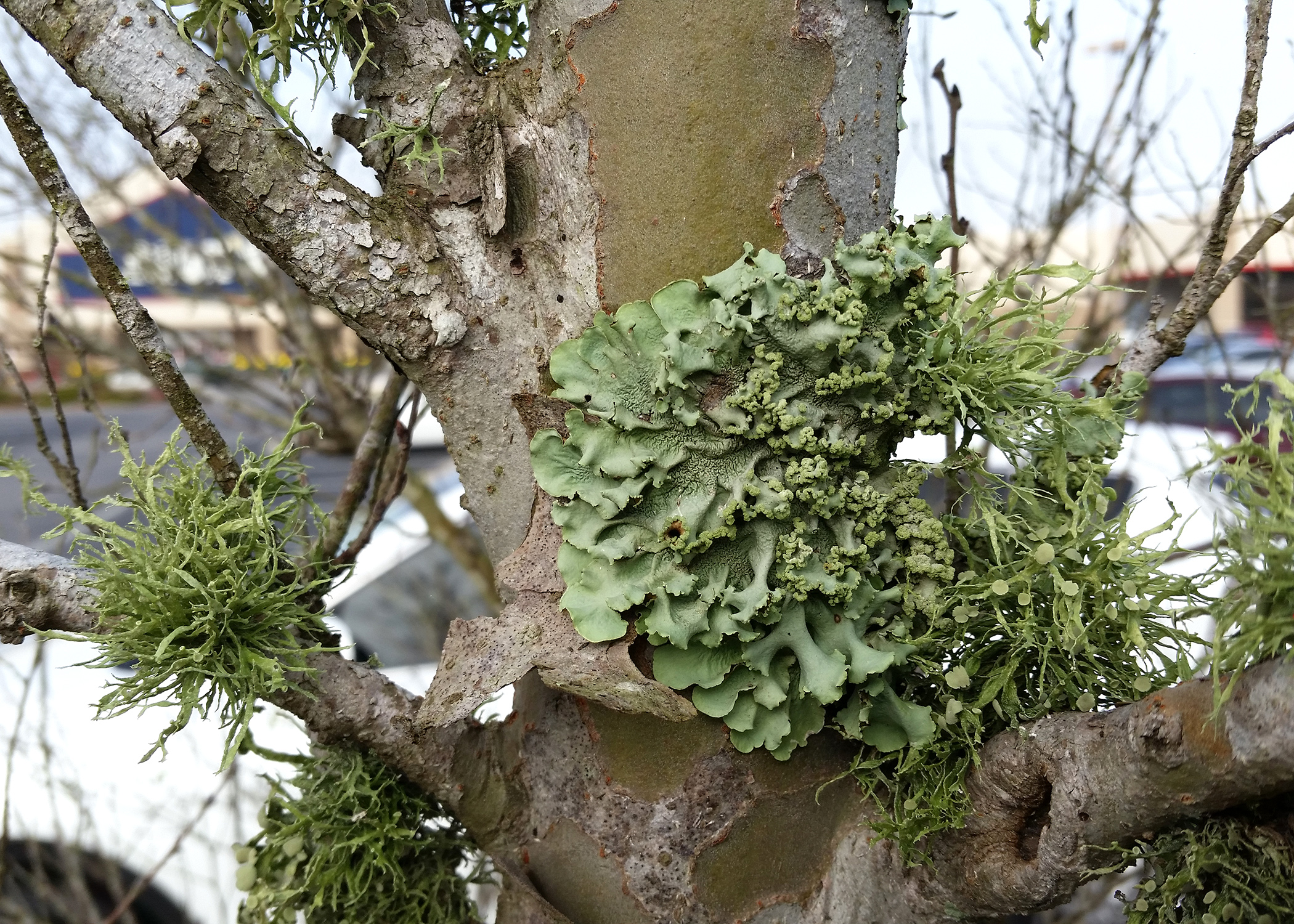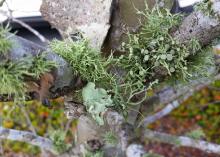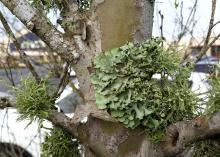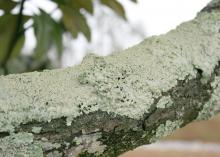Information Possibly Outdated
The information presented on this page was originally released on March 13, 2017. It may not be outdated, but please search our site for more current information. If you plan to quote or reference this information in a publication, please check with the Extension specialist or author before proceeding.
Unusual lichen do not damage plant hosts
Spring is always a busy time in my garden and landscape, as I'm sure it is in yours. It's when we start walking around and planning what we're going to plant this year, but it's also a time when landscape damage is most noticeable.
I get quite a few calls every spring about trees and shrubs in decline, as homeowners ask for advice on corrective action. The one thing most of these calls have in common is the presence of a gray-green "mold" growing on the trunk and branches. The caller is certain this "mold" is the reason their plant is suffering, and they ask what can be sprayed to get rid of it.
Rather than mold, the cause for their concern 99 times out of a 100 is an organism called lichen. These organisms are an unlikely combination of a fungus and an alga living in a symbiotic relationship on the plant’s bark. Lichen uses trees and shrubs only for support. The algae supply food via photosynthesis, and the fungi gather the water and other needed nutrients.
Lichen is a very interesting organism found throughout the world.
Many woody trees and shrubs begin to struggle when they are under some kind of stress, usually environmental, like drought or excessive heat. And when a shrub or tree struggles, its canopy tends to thin out, letting more sunlight into the interior of the canopy.
Now, lichen is already on the tree bark. With more sunlight, it begins to grow. As the trees and shrubs continue to decline, lichen becomes more noticeable, creating the illusion that it is causing the problem. As a result, homeowners think lichen is responsible for the tree and shrub decline. But, in fact, lichen grow on any hard surface outdoors, from wooden fences to rocks.
There are three main types of lichen commonly found in the landscape. One is spreading and has a flattened, crusty appearance. Another spreads across branches and develops wavy folds that resemble a crumpled sheet. The third type resembles highly branched balls of fuzzy stuff, with projections going in all directions. Despite the varied appearances, they are all lichens.
During the spring, the combination of temperature and moisture creates the perfect environment for lichen growth. It’s interesting to see that after a rain, lichen can appear to actually bloom. Small, round structures appear and produce spores.
So, how can the home gardener control lichen growth? There really aren’t any compounds to remove lichen. However, the good news is there really isn’t any need to remove it, either.
Lichens are opportunistic, naturally occurring organisms that increase their growth as a tree canopy starts to decline. The very best solution to keeping lichen in check is to keep landscape plants in optimum condition, following recommended watering, fertilization and other management practices. A healthy and well growing plant will have a canopy that discourages lichen growth. Light pruning of damaged branches encourages new branch growth, which, in turn, helps establish a denser canopy.
But don’t think of lichen as a problem. Here’s my opinion: Just as a piece of metal garden art will mature and gain an aged patina, lichen adds that touch of patina to our landscape plants. And remember that lichen grows on any hard, outdoor surfaces, even rocks. I’ve never heard anyone worried about lichen damaging a rock.

